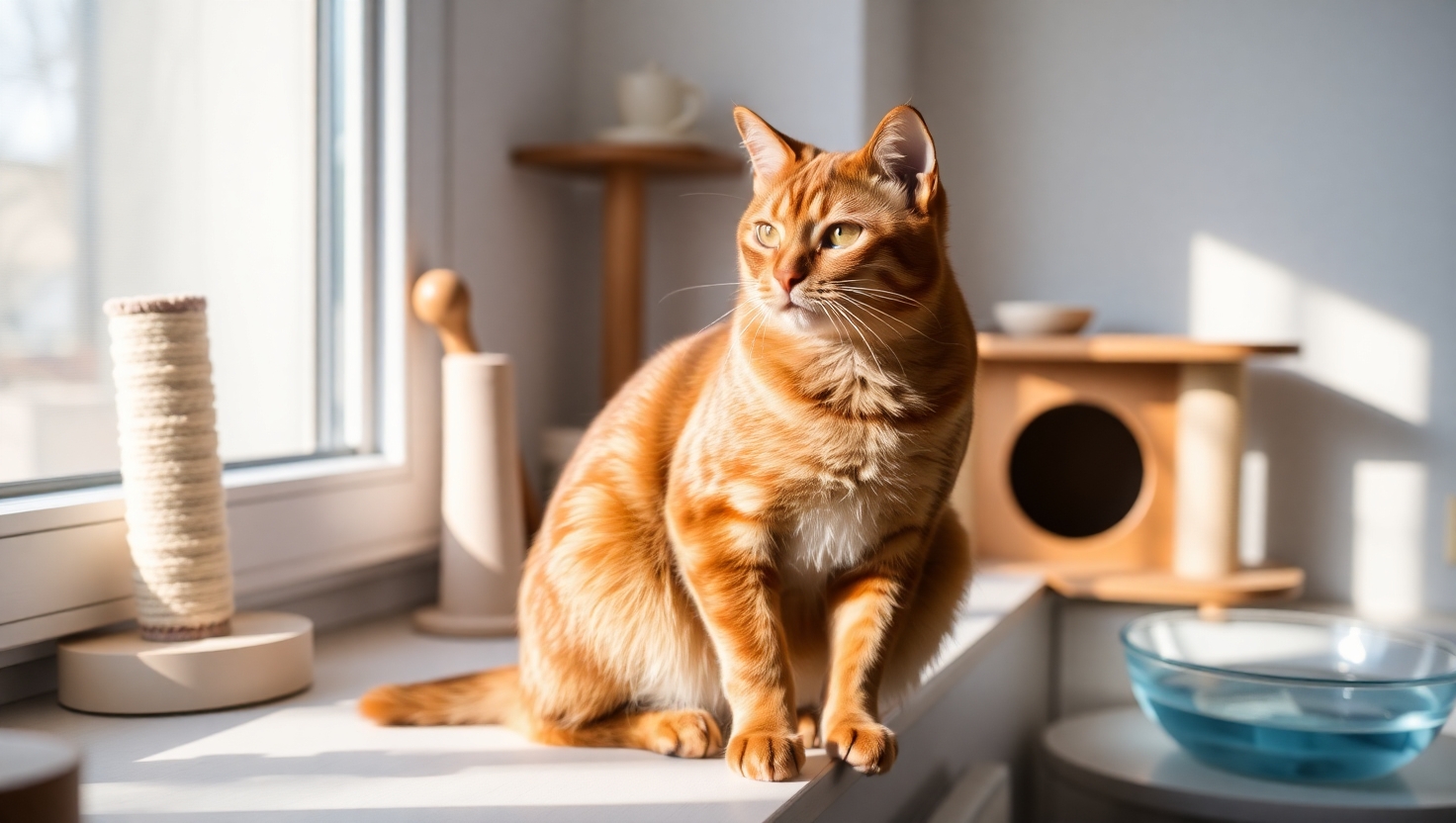Welcome to your complete resource for nurturing one of the most dynamic feline companions. These medium-sized marvels, standing 8-10 inches tall and weighing 8-12 pounds, bring loyalty, intelligence, and playful energy into any home. Their short, low-maintenance coat makes them ideal for busy households while their curious nature thrives on interactive play.

Often called “Abys” by enthusiasts, these pets form deep bonds with their families. They demand consistent mental challenges and physical activity to stay content—think puzzle feeders or climbing towers. While spirited, their grooming needs remain simple compared to longer-haired breeds.
This guide simplifies every aspect of raising a happy, healthy companion. You’ll discover practical tips for nutrition, exercise routines, and creating stimulating environments. Whether you’re new to pet parenting or expanding your furry family, you’ll find actionable advice tailored to this breed’s unique personality.
Key Takeaways
- Medium-sized breed requiring minimal grooming
- Thrives on mental stimulation and active play
- Forms strong bonds with family members
- Ideal for first-time owners due to manageable needs
- Needs structured routines for optimal happiness
Understanding the Abyssinian Cat Breed
Meet the breed that’s been turning heads since ancient times with its distinctive look and lively spirit. These athletic felines combine eye-catching beauty with a personality that lights up any room. Let’s explore what makes them stand out among popular cat breeds.
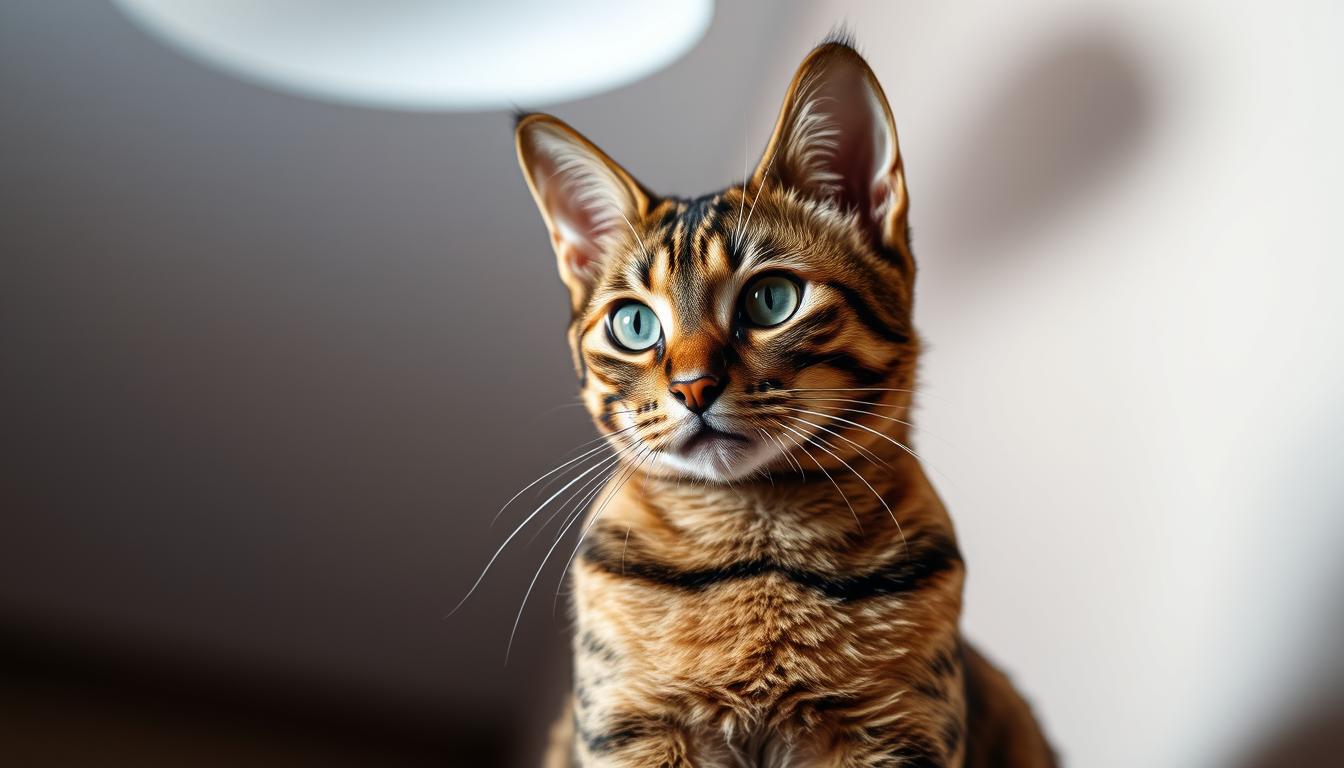
Distinctive Physical Traits
Their most recognizable feature is the ticked coat, where each hair shows 3-4 color bands. This creates a shimmering effect that changes in sunlight. Almond-shaped eyes in gold or green hues give them a perpetually curious expression.
| Trait | Abyssinian | Other Breeds |
|---|---|---|
| Coat Type | Agouti (ticked) | Solid/Striped |
| Body Type | Muscular & Slender | Varied |
| Eye Shape | Almond | Round/Oval |
| Activity Level | High Energy | Moderate |
Unique Personality Traits
These social butterflies thrive on interaction. They’ll follow you around the house, “help” with chores, and demand playtime. Their intelligence shines through puzzle-solving skills – some even learn to open doors!
Unlike more independent felines, they form deep bonds with all family members. Their playful nature remains kitten-like well into adulthood. Expect daily acrobatic displays and endless curiosity about every corner of your home.
History and Origins of Abyssinian Cats
Step into the captivating past of one of feline history’s most intriguing characters. These elegant companions carry stories etched in ancient art and shaped by global journeys. Their survival through centuries reveals a tale as dynamic as their personalities.
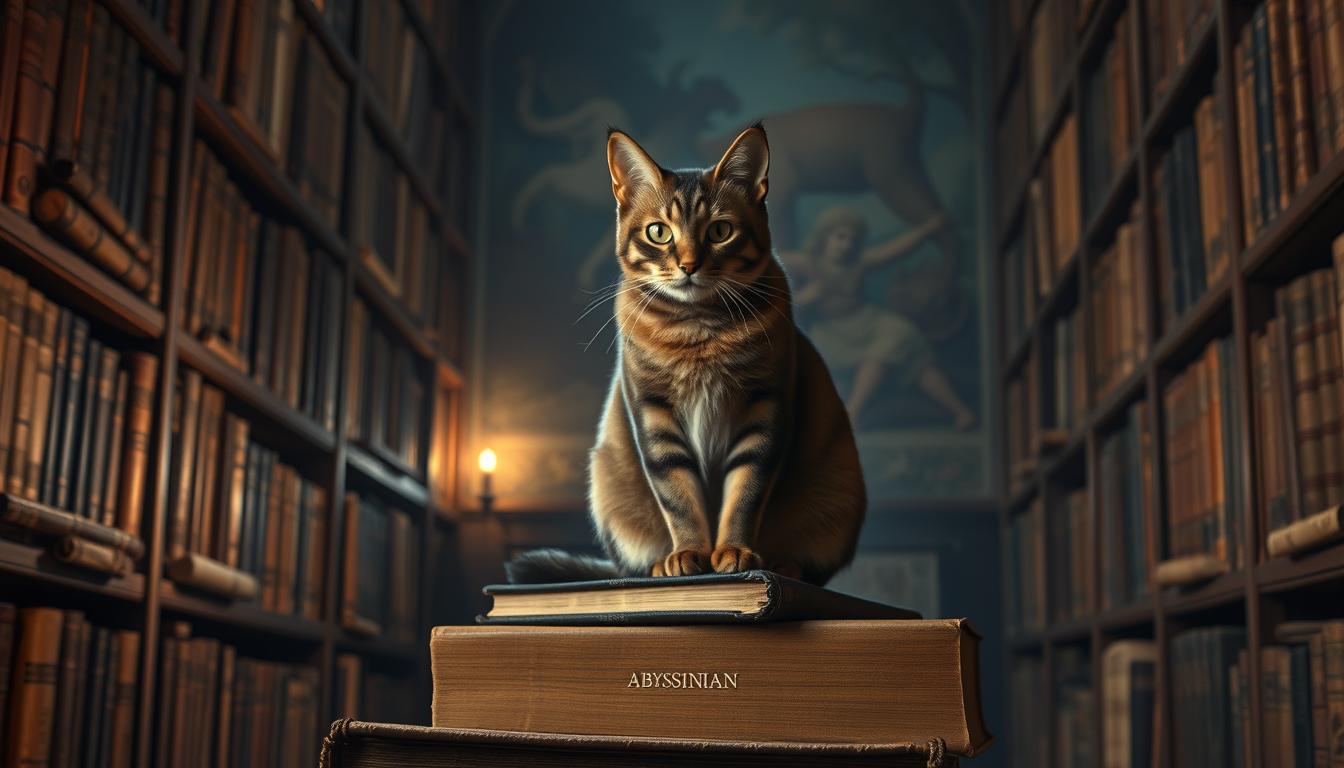
Ancient Legacy and Evolution
Many enthusiasts argue these sleek creatures are direct descendants of cats worshipped in Egyptian temples. Murals dating back 4,000 years show strikingly similar profiles—almond eyes and ticked coats. Yet other researchers point to genetic ties with felines from Ethiopia’s highlands.
The modern chapter began when British troops returned from Africa in the 1860s. A cat named Zula, brought from Abyssinia (now Ethiopia), became the foundation for today’s bloodlines. By 1882, the breed gained official recognition, charming households with its wild appearance and domestic charm.
Disaster struck in 1960s Britain. A devastating virus outbreak nearly erased the population. Breeders rallied, importing new stock to rebuild genetic diversity. This resilience transformed them into symbols of survival, blending ancient heritage with modern adaptability.
Today, their legacy thrives in homes worldwide. From pharaohs’ palaces to family couches, these spirited companions continue rewriting history—one playful leap at a time.
Fundamentals of Abyssinian Cat Care
Building a thriving life for your feline companion starts with mastering their daily rhythms. These energetic pets flourish when their physical needs and curious minds receive balanced attention. Though lively, their streamlined coats and adaptable nature make them surprisingly low-maintenance for households of all types.
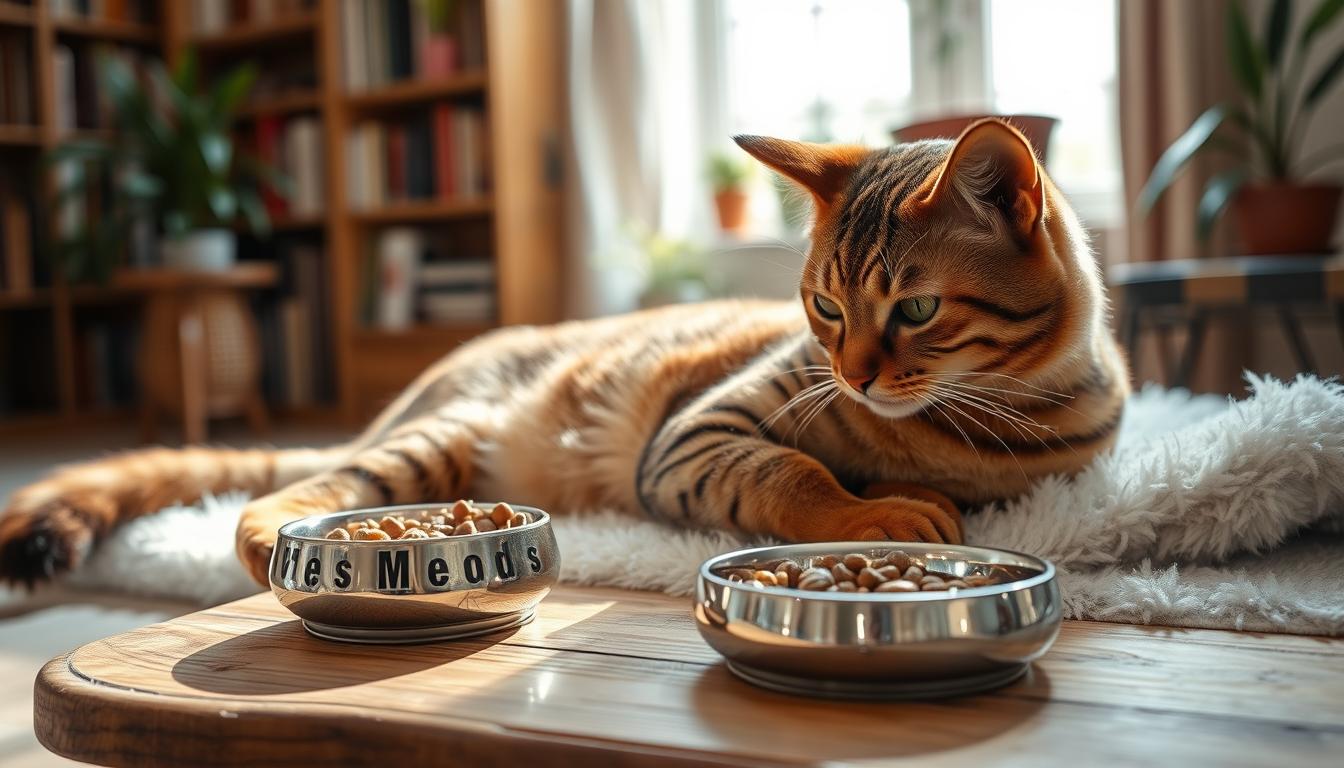
Daily Care Routines
Morning play sessions set the tone for success. Rotate puzzle feeders filled with kibble to spark problem-solving skills. Climbing towers near windows satisfy their love for vertical exploration while watching outdoor activity.
Establish consistent meal times using measured portions. Fresh water stations in multiple locations encourage hydration. A clean litter box in quiet areas maintains hygiene and comfort.
Creating a Healthy Home Environment
Designate exploration zones with scratch posts and hiding spots. Secure loose wires and toxic plants using cord organizers and elevated planters. Cat-proofing measures prevent accidents without limiting adventure.
Introduce new pets gradually through scent swapping and supervised visits. Teach children gentle handling techniques using interactive toys. Weekly family playdates strengthen bonds while burning excess energy.
Remember: Their short coat needs only weekly brushing, but daily affection sessions are non-negotiable. A structured yet flexible approach keeps these intelligent companions content and engaged.
Nutrition and Feeding Guidelines
Fueling your energetic companion starts with smart meal planning. These agile pets need quality nutrition to match their active lifestyles. Let’s break down how to keep them thriving through proper feeding practices.

Building the Perfect Meal Plan
Always choose AAFCO-approved formulas labeled for specific life stages. Kittens under 12 months require “growth” formulas with extra protein and calories. Adults thrive on “maintenance” blends that support lean muscle.
| Life Stage | Food Type | Daily Meals | Key Nutrients |
|---|---|---|---|
| Kitten (0-12mo) | Growth Formula | 3 | DHA, Calcium |
| Adult (1-10y) | Maintenance Blend | 2 | Taurine, Omega-3 |
| Senior (10y+) | Joint Support | 2-3 | Glucosamine |
Timing Matters
Youngsters burn energy fast—space three small meals 4-5 hours apart. Adults do best with morning and evening feedings. Always measure portions using the guidelines on your cat food packaging.
Watch for these signs of good diet balance:
- Glossy coat
- Steady energy levels
- Healthy weight maintenance
Consult your vet if you notice changes in appetite or digestion. With the right food strategy, your playful partner stays ready for adventure!
Grooming Essentials for Abyssinian Cats
Maintaining your feline friend’s radiant appearance combines practical care with bonding opportunities. Their sleek fur and expressive features thrive through simple yet consistent routines. Let’s explore techniques that keep them looking sharp while monitoring their well-being.
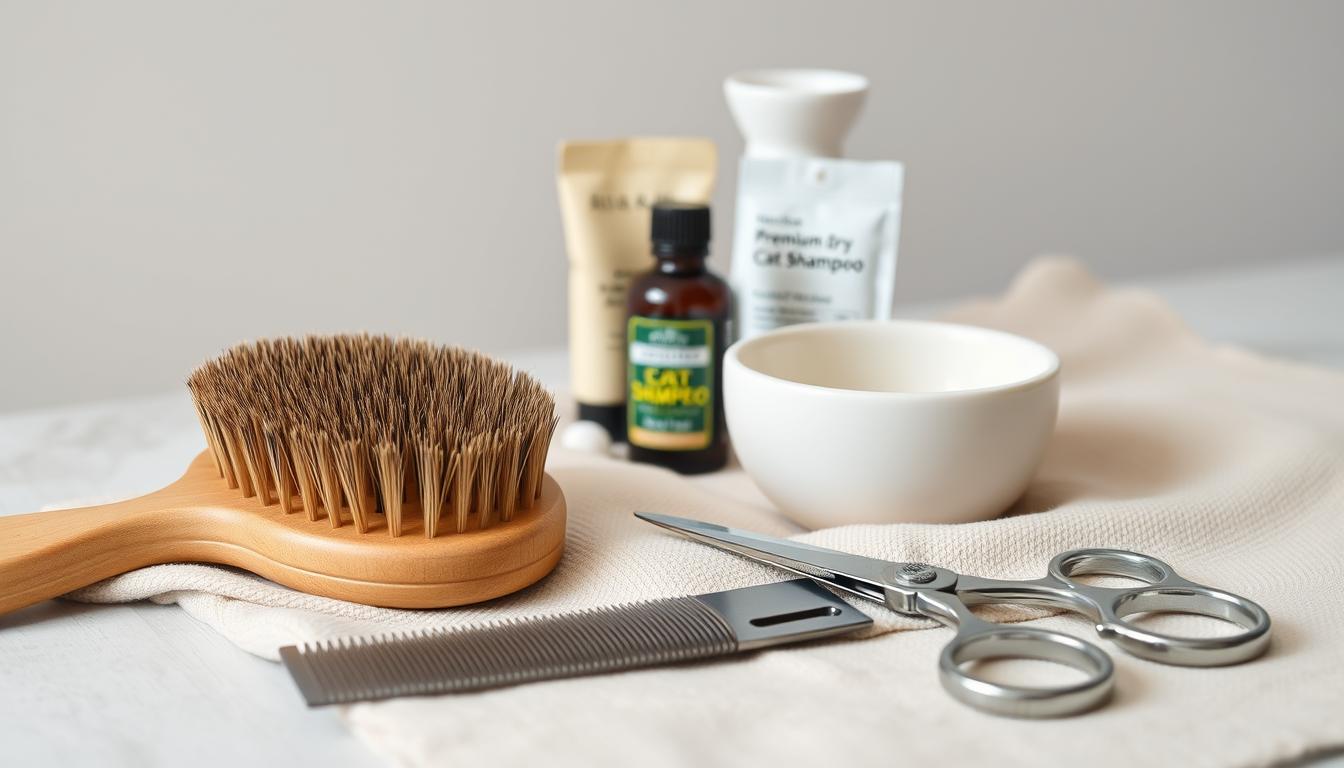
Coat Maintenance and Brushing
Weekly brushing sessions become quality time together. Use a soft-bristled brush to remove loose hairs and spread natural oils. This process enhances their coat’s signature shimmer while reducing loose fur around your home.
Their low-shedding fur rarely mats, making grooming sessions quick and enjoyable. Focus on areas where they groom less frequently – behind ears and along the back. Always finish with a gentle wipe using a microfiber cloth for extra shine.
Ear, Eye, and Dental Care
Daily eye checks take seconds but prevent bigger issues. Use a damp cotton pad to clear minor debris from their striking almond-shaped eyes. Watch for persistent discharge or redness that needs veterinary attention.
Ear care follows three simple rules:
- Inspect weekly for dark wax or unusual odors
- Clean visible areas with pH-balanced solution
- Never insert tools into the ear canal
Dental hygiene proves crucial for long-term health. Introduce tooth brushing gradually using poultry-flavored paste. Combine this with dental treats and annual professional cleanings for complete oral care.
Monitoring and Managing Health Issues
Keeping your feline companion thriving involves staying ahead of potential challenges. While generally healthy, this breed benefits from proactive monitoring to maximize their 9-13 year lifespan. Early detection makes all the difference in managing genetic predispositions effectively.

Common Genetic Conditions
Renal amyloidosis tops the watchlist, where abnormal proteins accumulate in kidneys. Regular blood tests help catch this silent threat before symptoms appear. Breeders now use DNA screenings to reduce risks in future generations.
Blood-related issues like pyruvate kinase deficiency demand attention. This inherited disorder breaks down red blood cells, causing anemia. Watch for unusual tiredness or pale gums during play sessions.
Vision concerns emerge early in some cases. Photoreceptor dysplasia can lead to blindness within six months of birth. Schedule eye exams if kittens bump into objects or avoid dimly lit areas.
Dental health forms another crucial frontier. Up to 70% develop gingivitis by age three without proper care. Combine tooth brushing with dental chews to combat inflammation before it escalates.
Partner with your vet to create a tailored prevention plan. Annual check-ups, genetic testing insights, and prompt symptom reporting form the best defense against these health challenges. With smart monitoring, your energetic friend stays ready for years of adventures!
Exercise and Mental Stimulation
Keeping your energetic companion engaged requires creative strategies that blend movement with brainwork. These agile pets flourish when their daily routine includes challenges that test both their physical prowess and problem-solving abilities.
Interactive Play and Puzzle Feeders
Rotate interactive toys like feather wands or motorized mice to spark natural hunting instincts. Schedule two 15-minute play sessions daily—morning bursts of energy and evening wind-down activities work particularly well.
Puzzle feeders turn mealtime into mental exercise. Try treat-dispensing balls or layered food mats that reward persistence. Climbing structures with multiple platforms satisfy their love for vertical exploration while providing physical stimulation.
Remember these essentials:
- Install scratching posts near favorite lounging areas
- Hide kibble in cardboard tubes for DIY challenges
- Refresh toy selections weekly to maintain interest
By pairing athletic activity with cognitive challenges, you’ll help your smart cookie stay sharp and content. Their curious nature thrives when environments evolve—keep things fresh, and they’ll return the favor with endless entertainment!
FAQ
What makes Abyssinians stand out in appearance?
Their sleek, ticked coat and almond-shaped eyes give them a wild, exotic look. The short, dense fur requires minimal brushing but shines with a warm, ruddy glow.
Are these felines energetic or laid-back?
They’re highly active and curious! Known as “clowns in fur coats,” they thrive on climbing, exploring, and interactive play. Puzzle feeders or feather toys keep them engaged.
How often should I groom my pet?
Weekly brushing with a soft-bristle tool helps maintain their coat. Monthly ear checks and nail trims, plus daily dental care, support overall wellness.
Do they have specific dietary needs?
High-quality protein from brands like Royal Canin or Hill’s Science Diet fuels their energy. Kittens need 3-4 meals daily, while adults do best with scheduled portions.
What health issues should owners watch for?
Genetic risks include renal amyloidosis and PK deficiency. Annual vet visits and DNA testing help catch problems early. Keep vaccinations updated, too.
Can they adapt to apartment living?
Yes, but vertical spaces like cat trees are essential. Rotate toys regularly to prevent boredom, and consider leash training for outdoor stimulation.
Are they good with families?
Their social nature makes them great companions for older kids. Supervise interactions with toddlers, as their high energy might overwhelm little ones.
How do I create a stimulating environment?
Combine climbing shelves, window perches, and treat-dispensing toys. Short training sessions using clickers or positive reinforcement boost mental sharpness.
Also Read:


